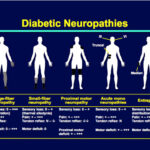
Despite all the advancements in the field of management of diabetes, it must never be forgotten that Lifestyle Changes are and will always be the cornerstone in the management of any chronic illness.
During the pandemic mayhem, many people developed diabetes, high cholesterol levels or heart related issues all boiling down to increased stress levels due to either insecurity in the job front which in turn leads to disordered dietary habits or lack of sleep.
As part of lifestyle changes one has to innovate and experiment to get the results and the process needs to be continually refined and tailored until progress is made. People may respond to short-term changes, but because the changes did not live up to the expectations they had, they gave up and ended up in a worse state than when they had started off. One may need to take the help of family or friends or even a like-minded group of people to keep pushing and motivating one another. One may need to work in the sweet spot between the comfort zone and below the limit of tolerance. People who are driven to achieve are usually impatient. Such people need to make a concerted effort to slow down, accept and get over the barriers by a persistent effort. One needs to develop self awareness and focus on self achievement, find and close the gaps between an ideal situation and stark reality, accept some things are out of control and get yourself to put your best practices to work. Remember every small step taken can lead to great acts in the long run.

The main components of Lifestyle changes include the following as shown in the image above and also the use of recreational drugs.
Nutrition therapy : The food industry thrives on luring the public. The efforts of art directors, food stylists, photographers and advanced software all make the photos of the food very glamorous (like a food porn, if I may quote). These are used to significant effect on billboards, on public transport, buildings, advertisements on television, movies and the social media platform.
Many feel that by taking meals from outside, they can negate the time spent cooking or avoid the paraphernalia in setting up a kitchen, dreaming about the menu or cleaning up after the cooking. This holds good for the young couples or those who are staying single and those working odd hours. The advantages of having meals prepared at home include a strong cultural cachet, freshness of produce, great nutritional value and above all, the love that is shared by the person preparing the meal. The times when the family sits together for meals are hampered by the increased screen time and the surge in food delivery apps which help in getting food of any international cuisine at the press of a few buttons on the Smartphone.
Those who have at least 11-14 meals prepared at home over a week have a 14% lower risk of developing type 2 diabetes and less weight gain when compared to people eating lesser of meals prepared at home or none. Maintain the pleasure of eating by focusing on balance and not on extremes.
Digital self-monitoring apps, Image-assisted dietary assessment and maintaining a food diary can help one assess their food intake.
The modern day dietitian works with an ever so strong fad diet culture amidst an ever increasing burden of diabetes, increased challenges faced with food accessibility, poly pharmacy, medicines claiming to aid in weight loss, patients who demand much and who lead a sedentary lifestyle maintaining a highly stressful job or stress at the family front.
Read the nutrition labels properly and do not get fooled by labels such as, ` sugar free`, `no sugar added`, `low sugar`. There are hidden sugars in many of the food items( identified by the -ose or -ol in the ingredients named). As a rule most of the delicious dishes or food items are unhealthy. Precooked frozen dishes, packaged food, packaged snacks, soft drinks, energy drinks, salad dressings, bakery produce, those items with preservatives and antioxidants all come under ultra processed food items which are not healthy. The list is endless.
Never shop when hungry. When one is bored, stressed or tired, the solution is to grab something either sweet or savory to eat. The terms,`biggie`,`jumbo`,`king size`,`supreme`,`grand`,`two-for-one` and `eat-all-you can` are used by the food chains to lure the unwary. An interesting concept in the Supermarkets is the way they keep unhealthy items( indulgences) in clear view close to check out counters luring one to go for the last minute quick purchases.
The old adages, ‘Have a hearty breakfast(like a king), a moderate lunch and a light dinner( like a pauper)’ and `Eat to live and not live to eat` still holds good.
The 4 key goals of nutrition therapy include:
- Promote and support healthful eating patterns emphasizing on a variety of nutrition dense food in appropriate portion sizes.
- Address individual needs based on cultural, personal, literacy,, numeracy, accessibility, willingness and ability to make changes to overcome barriers.
- Maintain the pleasure of eating by limiting food choices only when indicated by scientific evidence.
- Provide the individual with practical tools to develop healthy eating patterns rather than focusing on macronutrients, micronutrients or single foods. Practical tools can be through email or texting, Apps through smartphone, social networking sites or webcam/ podcasts
There is no ideal weight loss diet and no superiority for any of the myriad of diets reviewed. A diet must be sustainable and must achieve reduced calorie intake. The diet composition must consider the preferences and health status of the person.
Those diets with weight loss data, scientifically proven are the Low fat, Low carbohydrate(LCD), Very low carbohydrate(VLCD), High protein, Mediterranean, Plant based( vegan or vegetarian) or Meal replacement. The LCD and VLCD helps improved HbA1C and Lipid levels, improved cardiovascular health and also can help remission of diabetes. The main issue with these diets is the adherence to the diet in the long run.
The diets which do not have a scientific backing for weight loss include the Detox, Blood group type, Coffee diet and Cabbage soup and grapefruit diet.
There is no straightforward evidence that vitamins, supplements, herbs and spices help improve glycemic control in people without deficiencies. However, in those with deficiencies, supplements are advisable.
Exercises
It is important to incorporate at least 150 minutes of moderate intensity exercises(where one can talk but not sing when doing brisk walking, light biking, dancing or water exercises) a week or 75 minutes of vigorous intensity exercises(where one can talk only after pausing when jogging, running, fast bicycling or playing tennis, squash or badminton) a week.
Exercises must include all major groups of muscles at least 2 or 3 days a week, 2 to 4 sets per muscle group, with 8-12 repetitions per set using 60-80% of maximum resistance and involving full range of motion.
It is important to warm up and cool down properly. One must prevent injuries while doing the activity such as frozen shoulder, dislocation shoulder, tendon injuries, injuries due to poor footwear, injuries to the knee, hip, ankle and back.
Being a person with diabetes, one has to check the sugar levels before starting the exercise. If the sugar levels are more than 300 mg (16 mmol/L) reduce the levels before starting the exercise. Do not inject insulin soon before the exercise or after the exercise as the sugar levels may suddenly go down.
However, shame, laziness, being overweight, issues with weather, lack of time and fear of hypoglycemia are some of the barriers to avoid exercising.
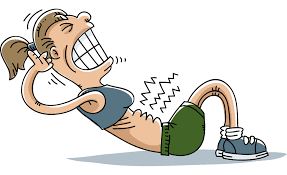
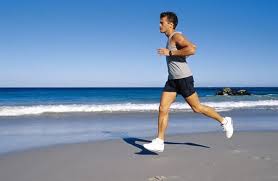
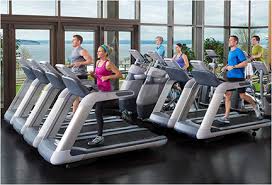
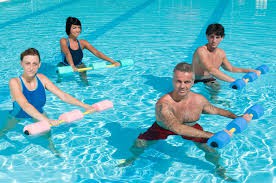

Yoga, Tai Chi, Pilates, Hula Hoop, dancing, Aerobics, Zumba, garden work, playing games, Exergames or X Box like digital games needing physical activity all count as exercises besides the usual swimming, jogging, cycling, mountain climbing, trekking, playing team or individual spots, boxing, martial arts and so on.
Swimming is also good exercise. Go to the shallow end of the pool, hold on the side railings and do any exercise in water- squatting, kicking feet, walking across the shallow end, or even using a ball to wade through water. These exercises in water, aquarobics, do not cause joint pains.
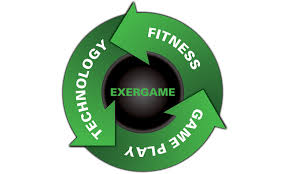

The X Box® and Play station® offer many interactive games for those who are digitally inclined. These may not be safe for those with back problems, knee problems, those who have numbness of the feet and those whose heart or kidneys are not healthy. Please ask the doctor before starting off. Some of the games involve moving, jumping and landing on feet and vigorous movements of the hands and legs.
The major types of exercises include:
- Aerobic
- Resistance training- using free weights, dumbbells, weight machines, elastic tubing, medicine balls or household items used as weights such as sandbags, big water bottles.
- Flexibility
- Postural or balance exercises
Doing the Sit-to-stand exercises when in the office, wall or tabletop pushups, planks or yard work can help those who spend most of the time at the office. The advantage with the exercises is that it can help prevent diabetes or help reverse diabetes in those with pre-diabetes and help in improving insulin sensitivity besides the benefits such as improving mood, muscle tone, bone health, balance, heart and blood vessels benefits.
Eyes: If a person has got severe retinopathy, avoid head jarring exercises,jumping exercises, breath holding exercises or exercises where the head has to be down. One can,however, participate in low impact exercises at a steady pace. Those with vitreous hemorrhage are advised no exercises. If vision is limited as in those with cataract, be careful of outdoor exercises and exercises in areas where light is low. Please consult your health care team before embarking on a program.
Heart: Start with low intensity exercises gradually intensifying. Avoid breath holding exercises. The heart rate must be kept ten beats below the threshold at which angina pain occurs. Those with artery diseases of the legs must do short interval exercises to avoid claudication pain. Please consult your health care team before starting on a program as modifications will be needed for those with heart failure and for those soon after a cardiac intervention such as a stent or bypass.
Neuropathy– it is advisable to perform low or no impact activity. Footwear must be modified to redistribute pressure and make it a habit to inspect the feet daily. Avoid overdoing the stretching exercises. It is advisable to do exercises to help improve balance and flexibility.
Nephropathy: Low intensity exercises preferred. Monitor electrolytes in those whose kidney function is very low. However get the health care teams concurrence before starting. Be careful when taking high protein powders after exercising. Ready-to-use Electrolyte solutions may contain high calories as well as sugar. Please resort to tender coconut water which gives the electrolytes in natural requirement. Lemon water with a pinch of salt and some sugar is also a good re-hydration solution.
Walking is still good exercise irrespective of one’s age, gender or to an extent, disability or handicaps. Walking alone may not be enough to meet one’s needs, but it is definitely better than no exercise at all.
The aerobic exercises such as brisk walking or cycling for 30 minutes a day 6 days a week can help improve levels of dopamine, endorphins and serotonin which in term, translates to triggering positive feelings and allays depression. The benefits of exercising include improving the blood flow to the lower half of the body, helps strengthen bones and muscles, delays ageing, improves posture and balance besides controlling the high blood sugar, cholesterol and blood pressure.











